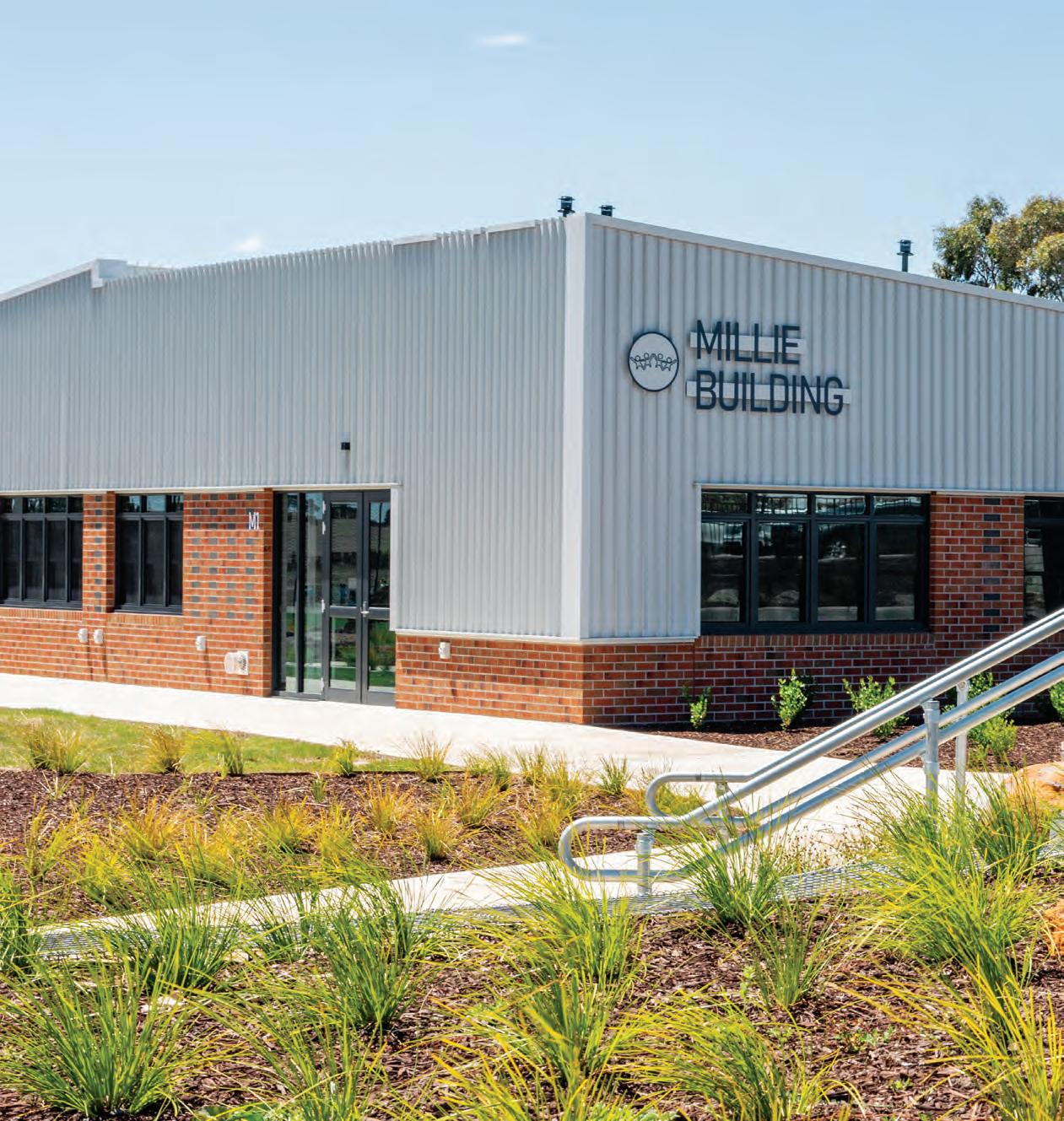
5 minute read
BOOK REVIEW
WORDS STEPHANIE STEFANOVIC
For many of us, the word “religion” evokes images of long-held traditions and beliefs, complex hierarchies and ornate, ageing buildings.
Religious Facilities, Hardback, 336 pages Published, 2021 It is no secret that we have seen a decline in religious belief around the world, particularly since the turn of the Millennium. Some of this has to do with the growing perception of religion as a relic of the past; something that has no place in today’s fast-paced techenabled world. Yet there are many people for whom religion continues to serve as a source of comfort, community and connection to themselves and the world around them. Thus, the challenge for churches and other religious facilities is finding a way to reconcile age-old traditions and modern values.
Religious Facilities, a 336-page photobook by David Andreu Bach, is a tribute to contemporary religious architecture and the architects spearheading the effort to reimagine religious structures for the modern world. It showcases the work of 29 global architects, from established industry front runners to young, emerging talents. Spanning all major religions and places of worship, the work featured includes everything from intimate chapels, churches, mausoleums and cemeteries to grand cathedrals and memorials.
Aside from featuring some stunning photography, Religious Facilities also includes architect profiles, project plans, renders and project commentary from the architects, translated into English, German, French and Spanish. Perhaps one of the book’s greatest strengths is the way it celebrates the architects behind the projects, chronicling their achievements and explaining their unique design perspectives. It also exposes the reader to different perspectives on religious worship, and the challenges architects face when designing these structures in various disparate corners of the world. THE HIGHLIGHTS
There are many projects of note in this book, but there is perhaps none more stunning – and surprising – than the work of Atelier Stepan. It is impossible not to mention the Church of Beatified Restitute, an unconventional curved concrete structure in Brno, Czech Republic. Built on the ground plan of a circle, an ancient symbol of heaven and eternity, this structure was designed to evoke feelings of safety and serenity, much like being “in the mother’s womb”, say the architects. The exterior is primarily concrete, aside from 80 metres of glass panelling that “depicts a rainbow as a symbol of God’s people’s covenant with the Lord” – an interesting reinterpretation of the typical stained-glass window. Inside, the church features a breathtaking asymmetric dome bathed in rainbow light, the matrix of which resembles a fingerprint, symbolising God’s touch.
Also worth noting is Atelier Stepan’s Church of St. Wenceslas, located in Sazovice, Czech Republic. Another abstract curved concrete structure, this project is a sophisticated interpretation of light, shadow and geometry. Windows are artfully embedded in the wall cuts, bathing the presbytery in light and revealing the bronze shell that is the altar. According to the architects, this light is a factor in creating “a non-existence of interface between what is verifiable by the senses, and what is beyond [the] material world”. Somewhat reminiscent of the Church of Beatified Restitute’s asymmetric dome, the interior also features a dramatic skylight that evolves from a triangle into a circle, representing God’s eye.

ABOVE Religious Facilities, a 336-page photobook by David Andreu Bach, is a tribute to contemporary religious architecture.
One of the most unexpected projects in this book is Czarl Architects’ extension of the Wat Ananda Metyarama Thai Buddhist Temple in Singapore. According to the architects, this temple is the oldest and only Thai Buddhist temple in Singapore that is attended by the Thai Royal Family. This is what makes it so surprising to see an extension that is such a significant departure from traditional Buddhist temple architecture.
The extension is best described as asymmetric, cantilevered block architecture with eccentric triangular windows scattered throughout. According to the architects, the client specifically requested an extension that would not follow the architectural traditions of Thai temples, but rather “reflect” these traditions. Inspired by the Bodhi tree, a sacred fig tree where Buddha is said to have attained Enlightenment, the aim of the structure was to reference the idea of the tree as a place that shelters, protects and nurtures. Interestingly, while the temple extension is undeniably modern and geometric, with minimalist interiors, it still manages to project feelings of safety and warmth – proving that it’s entirely possible for architects to reimagine the form of religious structures while still honouring tradition and meeting the needs of religious communities.
Another unexpected – but breathtaking – project is Sancaklar Mosque in Istanbul, Turkey, designed by EAA-Emre Arolat Architecture. Unlike any mosque you’ve ever seen, this inconspicuous, almost hidden, stone structure was designed as a contemporary response to traditional mosque architecture. According to the architects, the project focused solely on replicating the “essence” of a religious space, distancing itself from discussions on form. Cleverly embedded into the slope of the site, the structure blends effortlessly with its surroundings. This is enhanced by a green roof, which provides natural insulation against heat gain and loss, as well as landscape design featuring low-maintenance rural plants that merge with the surrounding prairie.
These are just some of the strikingly original projects featured in Religious Facilities. Honourable mentions also go to Egypt’s Basuna Mosque, designed by Dar Arafa Architecture; and Israel’s Mount Herzl Memorial Hall, designed by Kimmel Eshkolot Architects. Both of these structures are stunning examples of how modern design techniques can be used to evoke feelings of wonderment and awe, paying respect to the concept of a higher power and reinterpreting spirituality for today’s world.
THE TAKEAWAY
More than just a collection of projects, Religious Facilities broadens the mind of the reader. This book offers a unique view into how different religious denominations are choosing to adapt their places of worship to reflect contemporary values, and how architects around the world are stepping up to the challenge.
Best of all, it inspires the reader to challenge their perspective on religious architecture, and maybe even religion itself, proving that there is a place for spirituality in the modern world – and it can be beautiful.










